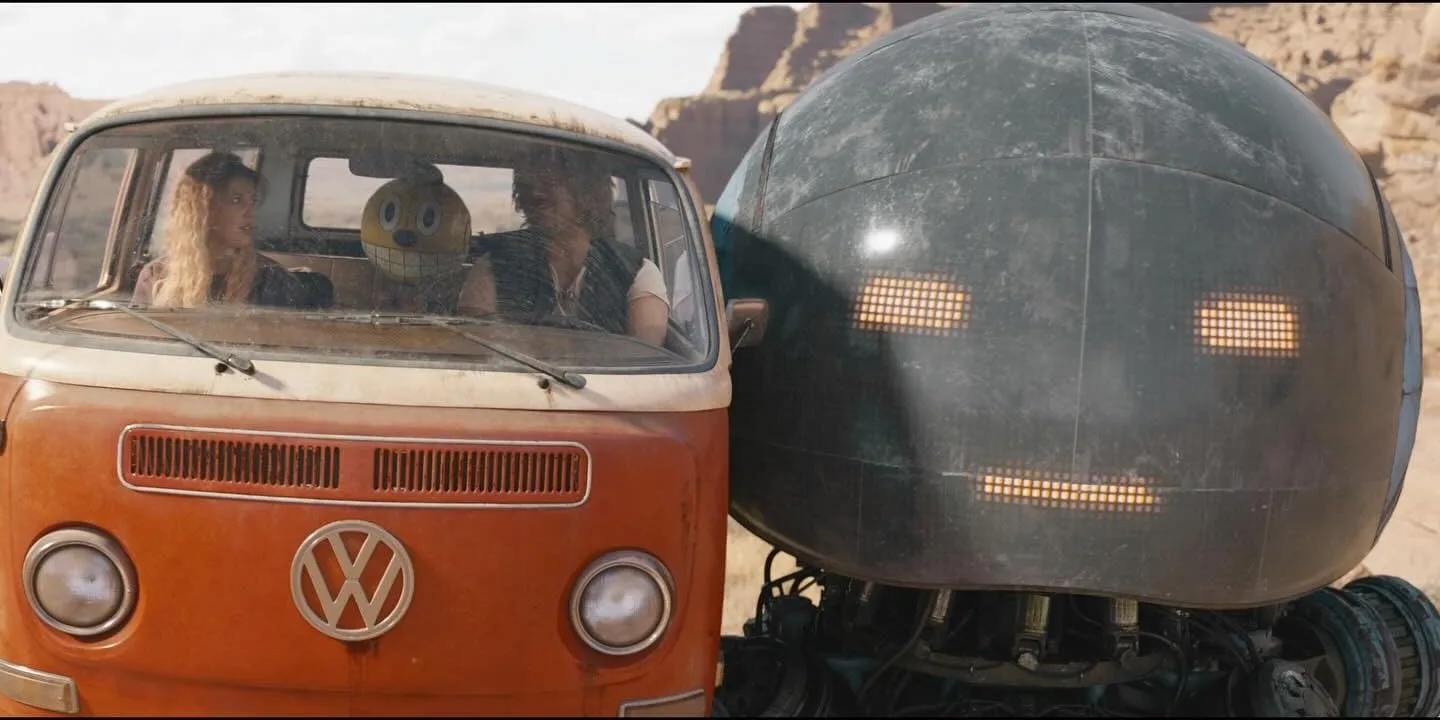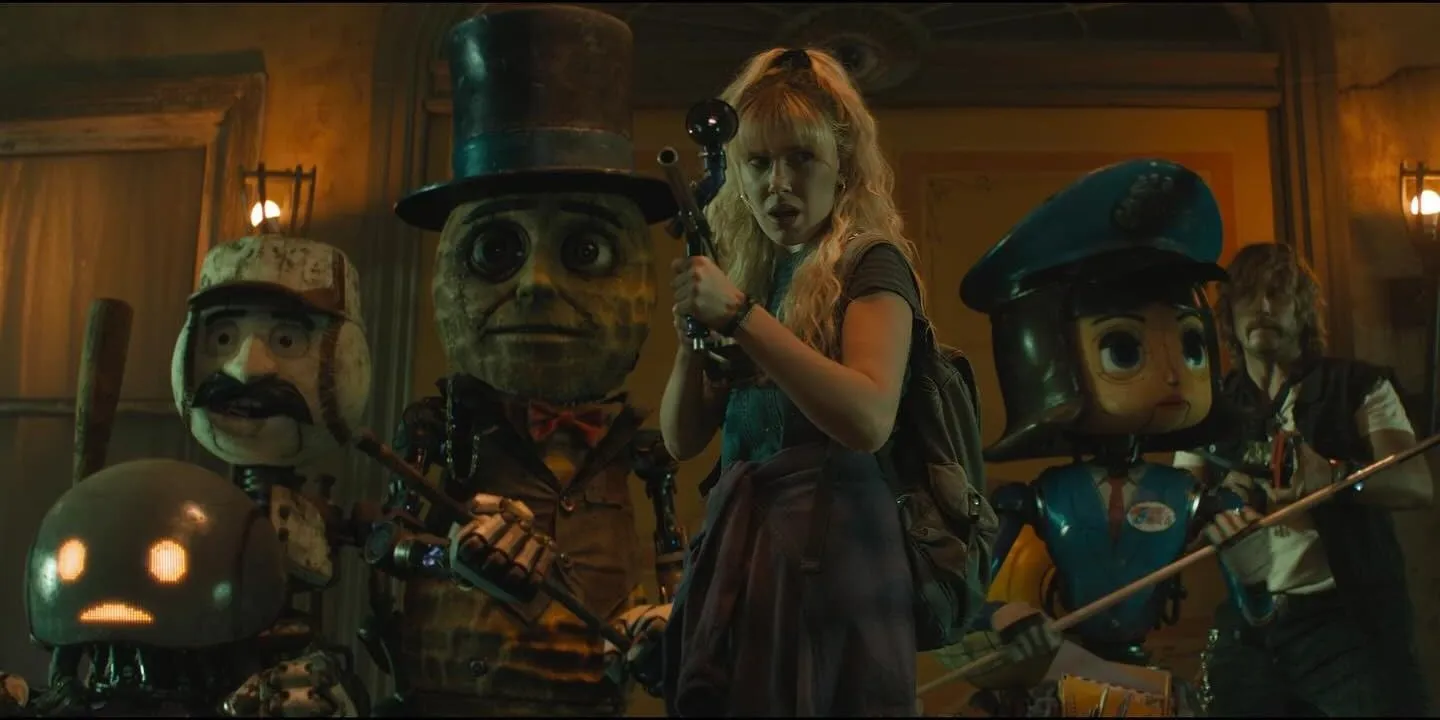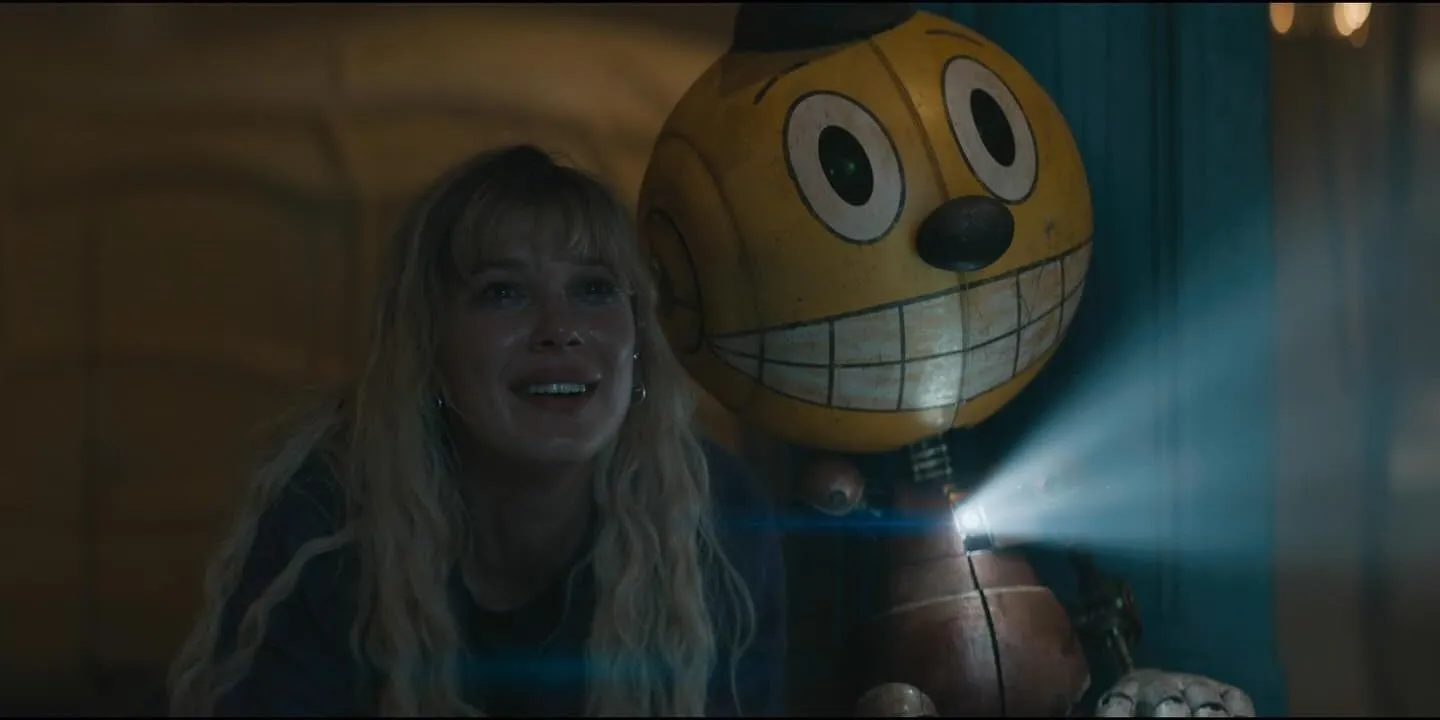Set in an alternate 1990s America, The Electric State unfolds in a reimagined landscape where societal collapse and technological excess shape a world stripped of certainties.
In its opening, a catastrophic event severs the bonds of a once-familiar life, leaving young Michelle reeling from the loss of her family and the mysterious disappearance of her brother. A singular, whimsical robot—reminiscent of a cherished animated figure—appears as a symbol of hope amid desolation, instigating a cascade of unforeseen events.
Michelle, accompanied by an unconventional assembly of allies, traverses vast, sun-bleached highways and abandoned relics of a bygone era. Their trek through barren terrains is interspersed with moments of hushed introspection and bursts of stark, kinetic action.
Each encounter peels back another layer of a meticulously constructed narrative, gradually revealing the machinations of a domineering tech magnate whose designs threaten to consolidate control over the fractured remains of society.
As the narrative accelerates toward its pivotal confrontation, the stakes escalate with palpable intensity, culminating in sequences where personal sacrifice and mounting peril converge. The film’s resolution leaves lingering uncertainties, inviting contemplation on a reality that refuses to offer neat conclusions or simple reconciliations.
Faces in a Fractured World
Michelle emerges as a study in transformation, evolving from a fragile adolescent burdened by loss into a resolute figure who challenges the impersonal forces that seek to control her destiny. Her struggle with the pervasive influence of advanced technology mirrors the upheaval that reshapes her surroundings.
The pain of personal tragedy fuels an unyielding desire to reclaim what was stolen, a fire that ignites her confrontation with a system built on cold precision. Her path, marked by raw determination and quiet defiance, mirrors the shifting dynamics of a society caught between human vulnerability and mechanized order.
Chris Pratt’s Keats strides into the narrative with a roguish charm and a pragmatic wit, injecting moments of levity that counterbalance the weight of loss and resistance. His rapport with his mechanical companion, Herman—whose playful banter and subtle humor offer a refreshing counterpoint to the pervasive despair—brings a delicate counterbalance to the unfolding tension.
Stanley Tucci’s portrayal of Ethan Skate casts him as a formidable force, an embodiment of unrestrained ambition and the peril inherent in unregulated technological might. His presence injects a palpable sense of menace that percolates through each confrontation, casting a long shadow over the unfolding rebellion.
Supporting figures, including a stern guardian and fleeting character cameos, contribute to an intricate network that amplifies the prevailing motifs of solitude, domination, and insurrection. The cast, a collection of accomplished actors and distinct voice talents, provides a rich array of interactions between human and synthetic entities, forging a narrative that pulses with complexity and resonant disquiet.
Digital Dissonance
The film presents a stark examination of technology’s dual nature, where inventive marvels and profound isolation are two sides of the same coin. The Neurocaster, a sleek device that seamlessly integrates with everyday life, embodies this paradox.
It introduces a new era of connectivity while simultaneously stripping away the spontaneity of human interaction, leaving a void that the digital promise cannot quite fill.
The narrative intertwines a persistent search for genuine human interaction with a critique of a society increasingly reliant on mechanical substitutes for empathy. Michelle’s path becomes a visual allegory for reclaiming a sense of humanity amid a landscape where digital overlays dictate perception and emotion.
The tension between authentic connection and manufactured interfaces is palpable, each scene underscored by the pervasive hum of technology in a world that feels both familiar and unnervingly altered.
A retro-futuristic setting serves as the canvas for these themes, evoking the sentimental charm of a bygone era while hinting at underlying societal disquiet. Cultural markers from the 1990s—quirky gadgets, distinctive musical cues, and period-specific aesthetics—clash with dystopic visions of a controlled future, rendering a visual and thematic collage that challenges conventional notions of progress.
The narrative’s critical eye turns sharply on the concentration of power in the hands of tech oligarchs. In a landscape where corporate agendas dictate the flow of life, the struggle against an impersonal regime becomes a battle for personal liberty and authenticity. An adaptation choice steers the tone toward accessibility without sacrificing the layered examination of these enduring cultural dilemmas.
Neon Shadows and Digital Dreams
The film’s production design conjures a striking visual atmosphere that fuses a nostalgic 1990s charm with futuristic innovation. Sets feature weathered diners, deserted highways, and rusted gas stations, their aged neon signs and classic fixtures juxtaposed against sleek, digitally rendered robotic forms.
This marriage of period details and modern technology creates a visual world where relics of the past merge seamlessly with contemporary marvels, crafting a setting that feels both familiar and unsettling.
Digital effects integrate with live-action sequences to produce robots that interact convincingly with crumbling urban ruins and sterile corporate environments.
Scenes in which metallic figures traverse derelict landscapes emphasize the film’s ambition, displaying an uncanny realism that magnifies the thematic tension between human decay and technological prowess. The interplay of light and shadow casts moments of subtle warmth against a backdrop of cold, calculated design.
Attention to set pieces is evident in every detail—from vintage radios and analog devices that hint at a forgotten era to futuristic vehicles that punctuate the urban sprawl. These carefully arranged artifacts forge an environment where tangible memories and digital innovation coexist, challenging the viewer to confront the remnants of a lost culture amid a surge of technological change.
Cinematography uses deliberate camera angles, precise lighting, and a shifting color palette that oscillates between warm, nostalgic tones and stark, clinical hues.
This visual rhythm infuses each frame with an intensity that mirrors the film’s thematic duality. Sound design and a reimagined musical score, featuring inventive reinterpretations of classic tracks, contribute a resonant auditory layer that synchronizes with the on-screen spectacle, enriching the overall experience with moments of unexpected clarity and depth.
Framing the Future in Motion
Joe and Anthony Russo imprint a distinctive signature on this film, drawing from an extensive background in high-profile spectacles. Their direction orchestrates large-scale sequences with a measured tempo that interlaces bursts of dynamic action with moments of quiet, deliberate reflection.
The arrangement of elaborate set pieces and expansive confrontations reflects a careful calibration of visual storytelling, even as extended montage sequences and dense dialogue occasionally disrupt the narrative flow.
The camera adopts a steady, purposeful motion, guiding the viewer through meticulously composed frames that capture both the bleak expanse of deserted urban landscapes and the understated tension in intimate character exchanges.
In scenes of confrontation, visual composition harnesses a crisp clarity that heightens the sense of urgency without diminishing the narrative detail of each shot. The integration of tangible set elements with digital renderings animates mechanical adversaries with a subtle precision that impresses on both a technical and thematic level.
Direction extends to the orchestration of performances, where actors are positioned with a spatial awareness that infuses key encounters with gravity and subtlety. Moments of high drama and introspection are staged with equal narrative emphasis, each arranged to command attention without overwhelming the viewer.
The synchronization of visual effects, artful set design, and thoughtfully guided performances produces a cinematic experience in which every shot feels meticulously constructed and attuned to its narrative purpose.
Reimagined Realities
The film transforms Simon Stålenhag’s illustrated work by retaining its evocative visual motifs and somber thematic pulses while reshaping the narrative to appeal to a wider audience.
Key imagery—desolate landscapes punctuated by futuristic devices and nostalgic relics—remains intact, even as the tone softens to invite a more inclusive viewing experience. This visual homage preserves the melancholic ambiance of the source material, yet the storytelling adopts a lighter register, opening a space where complex ideas are conveyed with clarity.
Significant creative choices redirect the narrative from a brooding, introspective exploration into an accessible adventure marked by moments of whimsy. Quirky robotic side characters emerge as symbols of playful defiance against a stark, impersonal reality, injecting humor into scenes that might otherwise feel heavy.
Such alterations influence the unfolding of character arcs and the narrative’s emotional contours, creating layers that engage audiences on multiple levels. The interplay between faithful visual representation and inventive narrative liberties underscores a deliberate strategy: to maintain the integrity of the original while reconfiguring its essence for a broader cinematic canvas.
The Review
The Electric State
The Electric State delivers a striking visual feast that reinterprets its source material with creative audacity. Its narrative ambition and stylish design offer an absorbing experience, though uneven pacing and thin character arcs limit its impact.
PROS
- Bold visual design
- Creative reinterpretation
- Engaging thematic exploration
CONS
- Inconsistent pacing
- Underdeveloped character depth




















































